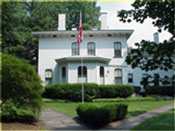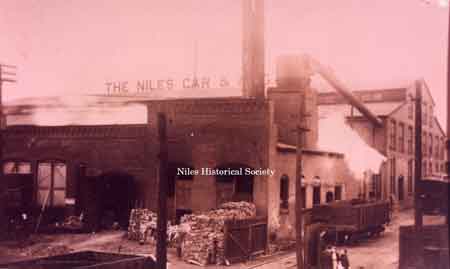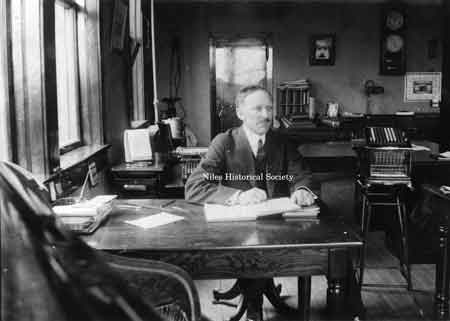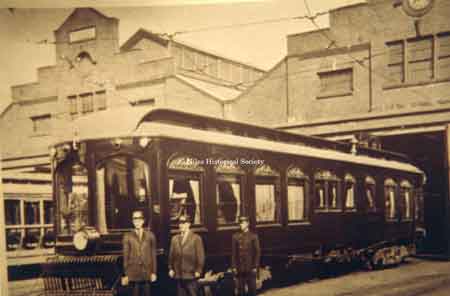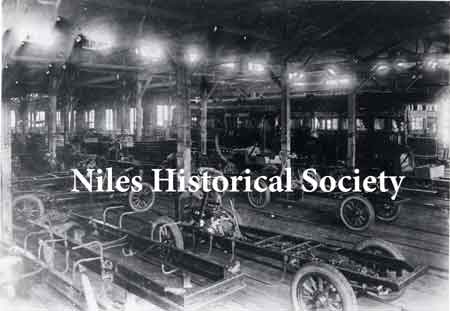Ward-Thomas Museum
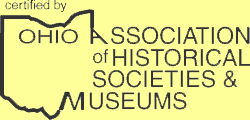

Niles Car & Manufacturing Company
1901–1917
Ward –
Thomas Museum
Home of the Niles Historical Society
503 Brown Street Niles, Ohio 44446
Click here to become a Niles Historical Society Member or to renew your membership
Click on any photograph to view a larger image.
News
Tours
Individual Membership: $20.00
Family Membership: $30.00
Patron Membership: $50.00
Business Membership: $100.00
Lifetime Membership: $500.00
Corporate Membership:
Call 330.544.2143
Do you love the history of Niles, Ohio and want to preserve that history and memories of events for future generations?
As a 501(c)3 non-profit organization, your donation is tax deductible. When you click on the Donate Button, you will be taken to a secure Website where your donation will entered and a receipt generated.
| Niles Car & Manufacturing Gave City Prominence
in 1900's. |
||
|
|
||
|
Photo of the interurban cars that were manufactured at the Niles Car & Manufacturing Company on Erie Street and sold to the Boone and Des Moines, Iowa electric railway. PO2.562 |
Arrival
of the electric railway during the later part of the 19th century
was the primary factor in the rapid development of American cities.
The quiet, efficient propulsion of Cities quickly expanded along streetcar routes which were built outward from the· center of town by promoters. During this interurban era of American transportation, Niles was one of the focal points of our country's electric railway system. The Niles Car and Manufacturing Company, makers of one of the finest lines of plush electric cars with gothic windows, was located on the block bounded by Erie, South Cedar, Allison and Mason Streets. Coal mining and iron industries began to develop in the Mahoning Valley shortly after the beginning of the 19th century and both of these industries developed steadily. By the time electric street cars and interurban “light” lines were becoming feasible as a means of travel , the basic industries of the area were employing hundreds of workers who needed transportation. |
|
|
|
||
|
The Niles Car & Manufacturing Company buildings built in 1901, are still in use by the Cleveland Steel Container Corporation on Mahoning Avenue at Erie Street. The outside of the Niles Car building Mr. C. E. Rose, secretary and treasurer of Niles Car & Manufacturing Co. at his desk in the company office about 1912. PO1.1109 |
Rapid expansion of the electric railways led a group of Niles men, headed by Frank Robbins, to organize the Niles Car and Manufacturing Company. In May 1901 the stockholders met and elected George B. Robbins, president; A. G. McCorkle, vice president; C. P. Souder, secretary; William Hubert, treasurer; W. C. Allison, general manager; and A. L. Jacobs, superintendent. The Allison Lumber Company mill was razed and construction of a 150 ft. by 202 ft. building for the Niles Car Company started in July, 1901. Before operations began January 20, 1902, with 250 men on the payroll, the company already had a handsome order on its books from the Everett–Moore Syndicate for a number of cars to be used on the electric railway lines in Chicago. Also, they had a contract for several coaches for steam railroads. Although some steel cars were produced in later years, the Niles Car & Mfg. Co. was noted principally for the handsome wooden cars with gothic windows made during the peak years of interurban car building. The company called these wooden cars “The Electric Pullman.” Six interurban cars shipped to Brandon Municipal in Manitoba, Canada. Delivered in 1914, they were in use until the end of service in 1931. They were all built by the Niles Car & Manufacturing Company, a business that flourished in Niles at the turn of the last century. PO1.1449 |
|
| |
||
|
The interurban car, “The Northern” at the Niles station streetcar barns. PO2.8 |
The street and interurban cars from Niles Car were bought by systems in every state in the Union. Among these were the largest wooden interurbans ever constructed. These 62-foot cars, weighing 44 tons each, were built in 1907 for the Washington , Baltimore, and Annapolis interurban line. In 1910 the car company delivered two cars of this same type to the Oregon Electric Railway Company; the Oregon line used these luxurian parlor–buffet–observation cars, which they named “Sacajawea” and “Champoeg,” in the Willamete Valley. The most noted car built by the Niles Car Works
was built in 1909 for magnates Everett and Moore of the
Northern Ohio Traction and Lighting Company. This car was 53 feet
long, 8 feet, 6 inches wide, 12 ft high and weighed 54,900 pounds;
this heavy ornate interurban, with beveled glass windows almost
to the floor, was known as the “Northern.” |
|
| |
||
|
Although not identified, presumably this car was built by the Niles Car & Manufacturing Company, a business that flourished in Niles at the turn of the last century. PO1.1443 |
When facing the “Northern”, the motorman's cab was on the lefthand side; on the right and extending back approximately 20 feet was the deluxe observation parlor furnished in cushioned wicker chairs. In the center right–hand side of the car was a private stateroom bath and kitchen with a hallway along the left side of the car, which led to the dining room and rear observation parlor . In 1924 an observation platform was added to the rear, making the overall length 55 feet, 11 inches; at that time the number “1500” was given to the car. When the “Northern” was in operation, it had its own picked crew to operate it and wherever this ornate, sparkling green interurban car appeared, it attracted much attention. The “Northern” was retired in 1932 when interurban service ended on the N.O.T. & L. line. After the road was abandoned, the body of the “Northern”, including its furnishings, was sold to A.A. Palmer of Wooster, Ohio who kept the “Northern”' alongside his apartment building for a period of time; then, Mr.Palmer built a railway museum west of town where he housed the car. At a later date the “Northern” was used as a change–room for attendants of a car wash in Wooster; it was still being used in this manner during 1959 when the Connecticut Electric Railway Museum at Warehouse Point, Conn. purchased the “Northern.” In July1963 the interurban was loaded on a flatcar and shipped to Windsor Locks, Connecticut, where it was transferred to a truck for its final ride to the museum. |
|
|
|
||
|
The interior of car # 308 built by the Niles Car & Manufacturing Company. It is now in the Indiana Museum of Transportation & Communication in Noblesville, Indiana. Picture of "#308 CA&E Niles Built at Indiana Museum of Transporation and Communication Noblesville, Indiana 46060." PO5.9 Postcard of red and yellow train, the Chicago
Limited #409 Chicago Aurora and Edgin at Trolleyville, Ohio.
PO5.22 |
The Connecticut Electric Railway Museum purchased the car, located a near match of its original trucks and today the “Northern” is in dead storage in a car barn at the museum waiting financial backing for a major restoration job to again make this once–elegant private car the “King” of the Niles Car and Manufacturing Company's products. When the Aurora, Elgin and Chicago was preparing to start operations in 1902, it signed a contract with the Niles Car Works for the construction of 10 passenger cars. These Niles cars were 47 feet 4 inches long; 8 feet, 7 inches wide, and 13 feet, 2 inches high. Although the bodies were of wood, they were set on an underframe of five–inch and six–inch steel I–beams riveted together with special channels and plates. The interiors, fitted with walk–over seats covered with rattan, were warmly paneled in quarter–sawn oak which was decorated with marquetry work . The ceilings were finished in blue and outlined in silver striping. These cars had the gothic, arched windows which
were a distinctive trademark of Niles cars; also, the arches on
the side windows were decorated with leaded stained glass. These ten cars, which served between Elgin and Aurora to Chicago, were numbered in the series 10 through 28, even numbers only. Car #22 was wrecked in 1911; however, most of the remaining cars served until passenger service terminated on July 3, 1957. By 1959 all of the cars were scrapped except for car #20. This 1902 Niles car, which according to the records of the Central Electric Railfan's Association, Chicago, Illinois, is the oldest inter urban car in existence today, was purchased by the Railway Equipment Leasing and Investment Company (RWLIC). After a few years of storage, car #20 was moved to South Elgin, Illinois where RWLIC had acquired trackage rights on the Aurora, Elgin and Fox River Electric Railway to operate its cars . Operations on RELIC commenced in 1966 with car #20: however, this car is presently in the car barn undergoing repairs. The Aurora, Elgin and Chicago Railway returned
to Niles Car to meet it equipment requirements in 1905 and again
in 1906. In 1905 four cars were delivered; they were numered 201
to 207 inclusive (odd numbers). In 1906 nine cars were delivered
and numbered 300 to 308 inclusive. Two cars of this group are
still in existence. Car #303 is presently operating on the Columbia
Park and South–Western Railway at Trolleyville U.S.A near
North Olmstead, Ohio; Car #308 is at the Indiana Museum of
Transport and Communication in Noblesville, Indiana,
undergoing restoration. |
|
| |
||
| Twenty–two Niles cars were ordered in 1906 by the Sacramento Northern Railway, which ran between San Francisco and Chico, California. Sixteen of these cars were built here at the Niles Car Works and Northern Electric Company built the other six, strictly following the plans of the Niles Car and Manufacturing Company. These cars were of three types–the interurban combination passenger and baggage motor car, the interurban passenger motor, and the interurban passenger trailer . In 1907, National City and Otay Railway of California
ordered six California style interurban cars on Niles Car’s
order no. 370 at a cost of For a little more than 20 years dark green Niles–built cars of the Youngstown and Ohio River Railway traveled between Salem and East Liverpool. Coaches No. 1, 3, 5, 7 and 9 built in 1907, had Baldwin trucks and were 49 feet long and 12 feet, 9 inches high. Numbers 11, 13 and 15 of this line were also built by Niles Car in 1907 and were combination passenger–baggage cars. This same line used 50 foot freight motor, no. 99, which was built by Niles Car Works in 1907 also. Coaches similar to those on the Youngstown and Ohio River Railway were built by Niles Car for operation on the small Elgin and Belvidere Electric Line in northern Illinois. By the end of December 1912, Niles Car completed shipment of 30 cars and closed one of the biggest months in its history. Among those orders were consignments of cars to Van–couver, Washington; Vancouver, British Columbia ; the Messba Railway Co. of Virginia ; a traction line in Minnesota; and a local company–the Mahoning Valley Street and Railway Co. The Youngstown and Southern Railway Co. had a Niles–built passenger car, no. 12, which was rebuilt in 1926 into a line car, no. 50, providing an end door so the car could carry rails and poles. A roller at the end of the platform helped pull poles out of the car. Also, the roof of this car was equipped with a platform, enabling workers to repair lines , etc. At one time, the Niles Car Works built composite wood and steel cars with double side walls and storm sashes for use by the Minnesota Electric Railway Lines.This car company built a center–door, steel, electric motor car for the Oklahoma Railway Company sometime during the early 1900s, for this style of car is illustrated in the reprint of the Niles Car & Mfg. Co. catalog published double end, steel car had wood linings, a double door, and weighed about 52,000 pounds. The ladies compartment had ten mahogany seats with reversible backs and bronze grab handles. It's not known how many Oklahoma cars were built for the Oklahoma Railway, but the cars were designed by and built under the supervision of the officers of that railway company and included the latest ideas in design, details and construction of electric cars. The last car the local car line, Mahoning Valley
Railway, purchased from the Niles Car works was a “Limited”
style 157; and that was the last limited Niles Car made. Just
about the last cars built by Niles Car were two center door cars,
No. 207 and no. 208, for the Cleveland and Erie Railway; the overall
length was 53 feet, 2 ¼ inches long
over vestibules; 23,526 lbs. was the weight of the carbody without
appliances and the wheels were 34 inches in diameter. This car
was used at Gates Mills by the C & E Division of The Eastern
Ohio Traction Company; later it was operated on the Niagara, St.
Catherine and Toronto, Canada line. |
||
After
1917 the firm turned to building motor trucks ; and, during World
War I, its plant became the home of the Engle- Aircraft Com- In 1919 the American Tire Corporation incorporated and used the plant for a few years. After that, it was occupied by The Stevens Metal Products Company, manufactures of barrels and shipping containers. Later it was the site of Republic Steel’s container division. Today Cleveland Steel Container Corporation produces shipping containers in the Niles Car and Manufacturing Company’s earlier home. The decline of the trolley car eventually led
to the formation of a few trolley museums. In many ways it is
sad that the interurban era has left us only relics and memories.
But, very satisfying is the knowledge that, in the field of transportation,
the City of Niles has carved its niche in the pages of our country’s
history and added another accomplishment to the City’s credits. |
||
|
Photo of one building of the Niles Car & Manufacturing Company taken from atop the water tower in the early 1900's. Mason Street is in the foreground. PO1.1429 |
Interior of the Niles Car &
Manufacturing Company factory when the company was converting
to producing trucks. To the right |
Electric Steel Railway Company Mineral Ridge and Niles stock certificate purchased by William A. Ohl of Mineral Ridge in 1893. PO1.1960 |
|
Mahoning Valley Railway cartoon by Harry Loew. PO1.1961 |
Photo of five Mahoning Valley interurban trolleys on the Robbins Avenue trestle. |
Picture of William Weber in the Niles car barn about the turn of the century. Picture of Utility Car # 345. PO5.5 |
|
|
||
